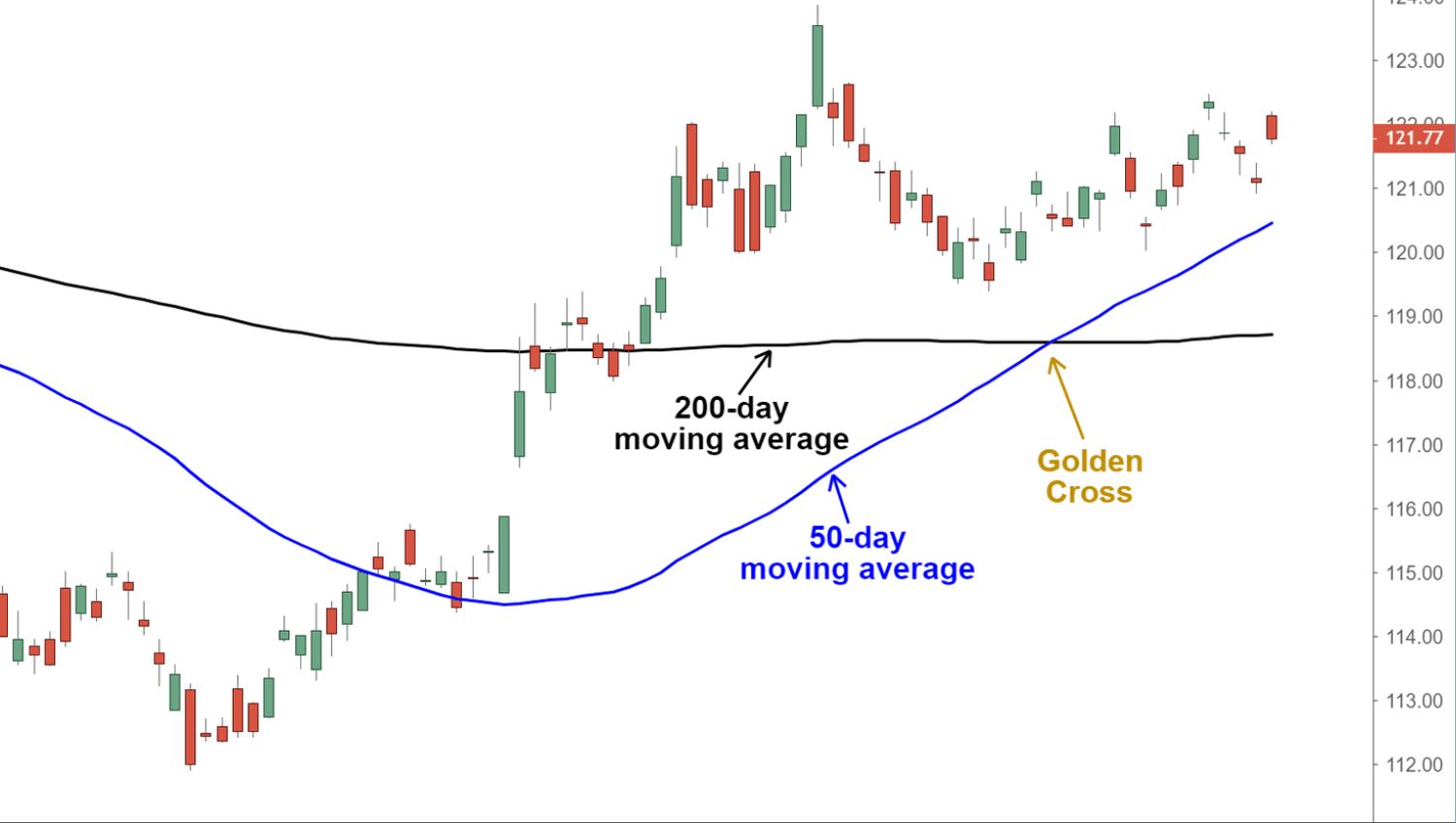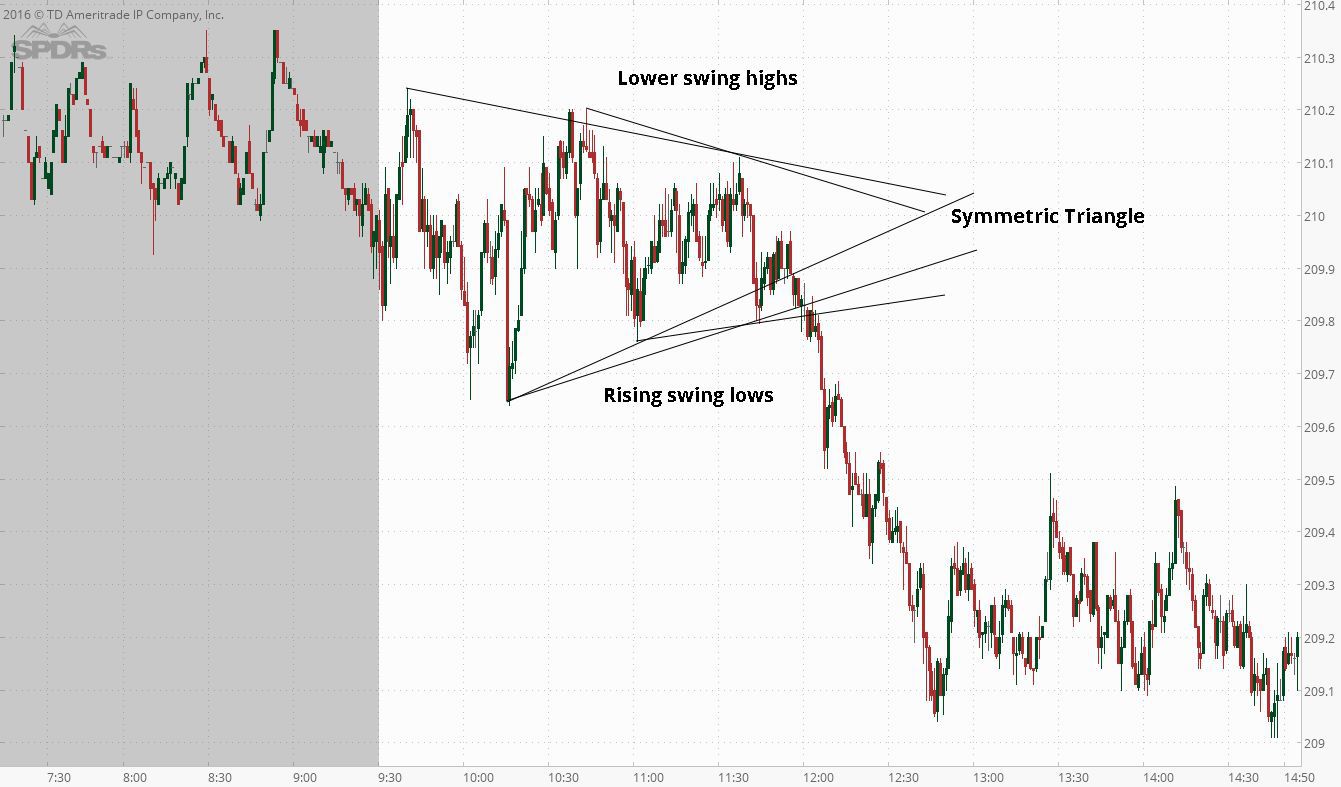Introduction
Welcome to the exciting world of trading! Whether you are a seasoned investor or a beginner looking to try your hand at the financial markets, understanding key indicators is crucial to your success. One such indicator that has gained significant attention among traders is the golden cross. In this article, we will explore what a golden cross is, how it can impact your trading decisions, and why it should be a part of your technical analysis toolkit.
The golden cross is a popular technical analysis pattern used by traders to identify bullish trends in the market. It occurs when a short-term moving average crosses above a long-term moving average, indicating a potential upward price movement. This bullish signal is widely regarded as a significant turning point in the market and is closely watched by both technical analysts and traders alike.
Understanding and recognizing a golden cross can provide valuable insights into market behavior, helping you make informed trading decisions. By identifying bullish trends early on, you can potentially enter positions at opportune times, maximizing your profit potential.
Calculating and interpreting a golden cross is relatively straightforward. It involves plotting two moving averages on a price chart, usually the 50-day moving average and the 200-day moving average. When the shorter-term moving average crosses above the longer-term moving average, a golden cross is said to have occurred.
Golden crosses can be found in various financial instruments, including stocks, indices, currencies, and commodities. By studying historical charts and analyzing past golden cross occurrences, traders can gain insights into potential future price movements and identify strategic entry and exit points.
Using the golden cross as part of your trading strategy has numerous benefits. By catching the start of a bullish trend, you can position yourself for potential long-term gains. The golden cross can act as a confirmation signal, providing additional support to your trading decisions based on other technical or fundamental analysis.
It is important to note that while the golden cross is a widely used indicator, like any other tool, it has its limitations. False signals can occur, leading to potential losses if not managed properly. As with any trading strategy, risk management and discipline are key to success.
In the following sections, we will delve deeper into how golden crosses are calculated, provide examples of golden cross formations, discuss different variations of the golden cross, and offer tips on effectively integrating it into your trading strategy.
Definition of Golden Cross
The golden cross is a technical analysis term used to describe a bullish pattern that occurs when a shorter-term moving average crosses above a longer-term moving average on a price chart. This crossover signifies a potential shift in market sentiment from bearish to bullish and often serves as a confirmation signal for traders.
The two key moving averages used in the golden cross calculation are the 50-day moving average (short-term) and the 200-day moving average (long-term). When the 50-day moving average moves above the 200-day moving average, it forms a golden cross.
Traders consider the golden cross to be significant because it indicates a potential trend reversal or the beginning of an upward price movement. This pattern suggests that the buying pressure has increased, potentially leading to higher prices in the near future.
The golden cross is primarily applied to technical analysis of price charts in various financial instruments, including stocks, indices, currencies, and commodities. It can be observed on different timeframes, from short-term intraday charts to long-term weekly or monthly charts.
It is important to note that the golden cross is often used in conjunction with other technical indicators and analysis tools to strengthen trading decisions. Traders may also consider factors such as volume, support and resistance levels, and other chart patterns to confirm the validity of the golden cross.
Traders typically seek to identify golden crosses as early as possible to take advantage of potential market opportunities. The presence of a golden cross can provide traders with a signal to enter or add to a long position, or it can act as a confirmation to hold onto existing positions.
While the golden cross is widely regarded as a bullish signal, it is not foolproof and can produce false signals. Traders must exercise caution and use proper risk management techniques when incorporating the golden cross into their trading strategies.
In the following sections, we will explore the importance of the golden cross in trading, how it is calculated, provide examples of golden cross formations, discuss different variations of the golden cross, and offer tips on effectively utilizing this indicator in your trading strategy.
Importance of Golden Cross in Trading
The golden cross holds significant importance for traders as it provides valuable insights into potential bullish trends in the market. By understanding and recognizing this pattern, traders can make more informed trading decisions and position themselves for potentially profitable opportunities.
One of the key reasons the golden cross is important in trading is its ability to signal a potential trend reversal or the beginning of an upward price movement. When a shorter-term moving average, such as the 50-day moving average, crosses above a longer-term moving average, such as the 200-day moving average, it suggests that buying pressure has increased and that the overall market sentiment may be shifting from bearish to bullish.
This bullish signal can be highly valuable for traders, as it allows them to identify potential entry points for long positions or to add to existing positions. By entering or adding to positions at the start of a bullish trend, traders can potentially maximize their profit potential as prices continue to rise.
The golden cross can act as a confirmation signal to validate other technical or fundamental analysis. For example, if a trader identifies a potential bullish chart pattern or observes positive news or earnings reports for a particular stock, the presence of a golden cross can provide additional confidence in the trading decision.
Furthermore, the golden cross is a widely recognized and closely watched technical indicator among traders and analysts. Its significance lies in the fact that many market participants monitor and react to the formation of a golden cross, which can lead to increased buying activity and further price appreciation.
By understanding the importance of the golden cross, traders can incorporate it into their trading strategies to improve their chances of success. However, it is important to remember that the golden cross is not foolproof and can produce false signals. Traders should always exercise caution, conduct thorough analysis, and use proper risk management techniques when incorporating the golden cross into their decision-making process.
In the next sections, we will explore how the golden cross is calculated, provide examples of golden cross formations, discuss different variations of the golden cross, and offer tips on effectively utilizing this indicator in your trading strategy.
How Golden Cross is Calculated
Calculating the golden cross involves plotting two moving averages on a price chart: the shorter-term moving average and the longer-term moving average. The most commonly used moving averages for the golden cross calculation are the 50-day moving average (short-term) and the 200-day moving average (long-term).
To understand how the golden cross is calculated, let’s break it down into three steps:
Step 1: Plotting the Moving Averages
Start by plotting the 50-day moving average and the 200-day moving average on your price chart. The moving averages can be based on closing prices, high prices, low prices, or other price modifications, depending on your preferred strategy and trading platform.
Step 2: Identifying the Golden Cross
Observe the movement of the two moving averages on the chart. When the shorter-term 50-day moving average rises and crosses above the longer-term 200-day moving average, a golden cross is said to have occurred. This crossover signifies a potential bullish trend reversal or the beginning of an upward price movement.
Step 3: Confirmation and Validation
While the crossover itself indicates the formation of a golden cross, it is crucial to confirm and validate this signal. Traders often consider factors such as volume, support and resistance levels, and other technical indicators to ensure the validity of the golden cross formation. It is important to use multiple indicators and conduct thorough analysis to minimize false signals and increase the accuracy of the trading decision.
Traders can adjust the time frames of the moving averages to suit their trading style and preference. Shorter-term traders may use a 10-day moving average with a 50-day moving average, while longer-term traders may opt for a 100-day moving average with a 200-day moving average. The key is to find the right balance between capturing shorter-term price movements and identifying longer-term trends.
Upon completing the calculation and identifying a golden cross, traders can make informed trading decisions. The golden cross serves as a potential signal to enter or add to long positions, or as a confirmation to hold onto existing positions.
It is important to note that while the golden cross can be a reliable indicator, it is not infallible and can produce false signals. Traders should always conduct thorough analysis, validate the signal with other indicators, and use proper risk management techniques to enhance trading decisions.
In the following sections, we will provide examples of golden cross formations, discuss different variations of the golden cross, and offer tips on effectively utilizing this technical indicator in your trading strategy.
Examples of Golden Cross in Trading
Let’s explore some examples of golden cross formations in trading to better understand how this technical indicator can be applied.
Example 1: Stock XYZ
Suppose you are analyzing the price chart of stock XYZ and notice a golden cross formation. The 50-day moving average is crossing above the 200-day moving average, indicating a potential bullish trend reversal. This could be an indication that buying pressure has increased, and higher prices may follow. As a trader, you might take this as a signal to enter a long position or add to your existing position, anticipating further price appreciation.
Example 2: Index ABC
Now let’s consider an example involving an index, such as the ABC Index. After a prolonged period of bearish sentiment, you observe a golden cross formation on the index’s price chart. The 50-day moving average crosses above the 200-day moving average, suggesting a potential shift toward a bullish trend. This could be viewed as an opportunity to enter long positions on index-related instruments, such as ETFs or futures contracts, in anticipation of a market upswing.
Example 3: Currency Pair DEF
Next, let’s examine a currency pair, DEF. You notice a golden cross forming on the price chart, with the shorter-term moving average crossing above the longer-term moving average. This could indicate a potential trend reversal or a beginning of an upward price movement in the currency pair. As a forex trader, you might consider this as a signal to enter a long position on DEF against another currency, expecting the exchange rate to increase in your favor.
These are just a few examples of golden cross formations in trading. It is important to note that the golden cross can be applied to various financial instruments and timeframes. Traders often use historical price charts and technical analysis tools to identify and validate golden crosses, combining them with other indicators and analysis techniques to enhance their trading decisions.
Remember that while the golden cross can be a useful indicator, it is not foolproof and can produce false signals. It is important to conduct thorough analysis, consider other factors such as volume and support/resistance levels, and practice proper risk management techniques when utilizing the golden cross in your trading strategy.
In the upcoming sections, we will discuss the benefits of using the golden cross in trading, different variations of the golden cross, and offer tips on effectively incorporating this indicator into your trading strategy.
Benefits of Using Golden Cross in Trading
The golden cross is a widely used technical indicator in trading that offers several benefits to traders. Let’s explore some of the key advantages of incorporating the golden cross into your trading strategy.
1. Early identification of bullish trends: The golden cross provides a signal for potential trend reversals or the start of upward price movement. By recognizing the golden cross early, traders can position themselves to capture the beginning of a bullish trend, potentially maximizing their profit potential.
2. Confirmation of trading decisions: The golden cross can act as a confirmation signal, validating other technical or fundamental analysis. If a trader identifies a potential bullish chart pattern or observes positive news or earnings reports, the presence of a golden cross can provide additional confidence in the trading decision.
3. Entry and exit points: Traders utilize the golden cross to identify strategic entry and exit points. For example, when a golden cross occurs, it may signal a time to enter a long position or add to existing positions. On the other hand, if a death cross (the opposite of a golden cross) occurs, it might be a signal to exit or take profits on a position.
4. Increased market awareness: The golden cross is a well-known technical indicator, widely watched by analysts, traders, and market participants. When a golden cross forms, it can attract attention and lead to increased buying activity, potentially driving prices higher. By being aware of this indicator and monitoring it closely, traders can stay informed about potential trend changes and market sentiment.
5. Compatibility with other indicators: The golden cross can be used in conjunction with other technical indicators to strengthen trading decisions. For example, combining the golden cross with indicators like the RSI (Relative Strength Index), MACD (Moving Average Convergence Divergence), or Fibonacci levels can provide additional confirmation and enhance the accuracy of trading signals.
6. Applicability to various financial instruments and timeframes: The golden cross can be applied to different financial instruments, including stocks, indices, currencies, and commodities. It is also effective across various timeframes, allowing traders to utilize it on intraday, daily, weekly, and monthly charts. This versatility empowers traders to adapt the golden cross to their preferred market and trading style.
While the benefits of the golden cross in trading are significant, it’s essential to keep in mind that it is not infallible. False signals can occur, leading to potential losses if not managed effectively. It is crucial to combine the golden cross with proper risk management techniques and conduct thorough analysis to maximize its advantages.
In the upcoming sections, we will explore different variations of the golden cross, discuss its limitations, and provide tips for effectively incorporating the golden cross into your trading strategy.
Different Variations of Golden Cross in Trading
The golden cross, as a technical indicator, has several variations that traders can consider when analyzing financial markets. These variations provide additional insights and can be tailored to suit specific trading strategies. Let’s explore some of the different variations of the golden cross in trading:
1. Simple Moving Average (SMA) Golden Cross: The classic golden cross involves using simple moving averages, such as the 50-day and 200-day moving averages. This is the most widely recognized and commonly used variation of the golden cross, providing a straightforward approach to identifying potential bullish trends.
2. Exponential Moving Average (EMA) Golden Cross: In this variation, exponential moving averages are used instead of simple moving averages. Exponential moving averages place more weight on recent price data, making them more responsive to short-term market movements. Traders who prefer to capture short-term trends may find the EMA golden cross more suitable for their trading strategies.
3. Moving Average Ribbon: The moving average ribbon involves plotting multiple moving averages of varying lengths on a price chart. The ribbon provides a visual representation of the convergence and divergence of moving averages. When the ribbon starts to widen or the moving averages start to separate, traders may interpret this as a potential golden cross formation.
4. Weighted Moving Average (WMA) Golden Cross: The weighted moving average assigns greater importance to recent price data, making it more responsive to recent market conditions. Traders who focus on capturing short-term trends or volatility may prefer using the WMA golden cross variation.
5. Adaptive Moving Average (AMA) Golden Cross: The adaptive moving average adjusts its sensitivity to market conditions, allowing it to provide more accurate signals during different market environments. The AMA golden cross variation dynamically adapts to changes in market volatility, making it useful for traders looking to adapt to varying market conditions.
6. Triple Moving Average Golden Cross: Incorporating three moving averages, the triple moving average golden cross adds an additional layer of confirmation to the signaling process. For example, a trader may use a shorter-term, medium-term, and longer-term moving average, such as the 10-day, 20-day, and 50-day moving averages, to identify multiple golden crosses within a given trend.
These are just a few examples of the different variations of the golden cross in trading. Each variation offers traders the flexibility to adapt the indicator to their preferred trading style, timeframes, and market conditions.
Regardless of the variation chosen, it is crucial to validate golden cross signals with other technical indicators, analyze volume patterns, and consider other relevant aspects of market analysis. By combining multiple indicators and analysis techniques, traders can enhance the accuracy of their trading decisions and improve their overall trading performance.
In the upcoming sections, we will discuss the limitations of the golden cross, along with tips on effectively incorporating this indicator into your trading strategy.
Limitations of Golden Cross in Trading
While the golden cross is a popular and widely used technical indicator, it is important for traders to be aware of its limitations. Understanding these limitations can help traders make more informed decisions and avoid potential pitfalls. Here are some key limitations to consider when utilizing the golden cross in trading:
1. False Signals: Like any technical indicator, the golden cross can produce false signals. Market conditions and price movements can be unpredictable, and the occurrence of a golden cross does not guarantee a profitable trade. Traders should exercise caution and use additional confirmatory factors to validate the signal before making trading decisions.
2. Lagging Indicator: The golden cross is a lagging indicator, meaning it relies on past price data to generate signals. By the time the golden cross forms and is confirmed, a significant portion of the price move may have already occurred. Traders should be mindful of this lag and consider using other leading indicators or additional analysis techniques to complement their trading strategies.
3. Sensitivity to Market Volatility: The golden cross can be sensitive to market volatility. During highly volatile periods or market disruptions, false signals may be more likely to occur, leading to potential losses. Traders should be aware of market conditions and adjust their risk management accordingly when relying on the golden cross.
4. Whipsaw Movements: Whipsaw movements refer to sudden and volatile price reversals that can lead to false signals and unpredictable market behavior. In choppy or range-bound markets, the golden cross may generate signals that quickly reverse, resulting in losses or missed opportunities. Traders should exercise caution and consider using additional indicators or techniques to filter out whipsaw movements.
5. Limited Application in Consolidation or Bearish Markets: The golden cross is primarily designed to identify and capitalize on bullish trends. In periods of market consolidation or bearish markets, where prices are trending downwards or trading in a range, the golden cross may not provide reliable signals. Traders should be aware of the market context and consider alternative strategies during these market conditions.
6. Over-reliance on Historical Data: The golden cross relies on historical price data to generate signals. Traders should be cautious in assuming that past patterns will always repeat themselves in the future. Market dynamics and conditions can change, and it is essential to adapt to evolving market trends and incorporate other factors into the decision-making process.
Understanding the limitations of the golden cross is crucial to managing expectations and incorporating it effectively into trading strategies. Traders should always conduct thorough analysis, combine the golden cross with other indicators or analysis techniques, and adhere to proper risk management practices to mitigate potential risks and increase the likelihood of successful trades.
In the upcoming sections, we will provide tips on effectively incorporating the golden cross into your trading strategy, maximizing its advantages while mitigating its limitations.
Tips for Trading Using Golden Cross
When incorporating the golden cross into your trading strategy, it is important to consider these helpful tips to increase the likelihood of successful trades and maximize the benefits of this technical indicator:
1. Use the golden cross in conjunction with other indicators: While the golden cross can provide valuable insights, it is always beneficial to use it in combination with other technical indicators or analysis techniques. This can help validate signals and provide a more comprehensive view of market conditions before making trading decisions.
2. Validate signals with volume analysis: Analyzing trading volume alongside the golden cross can offer additional confirmation of potential trend reversals or trend continuations. Higher volume during the golden cross formation can signify increased market participation and lend credibility to the signal.
3. Consider market context: Market context is critical when interpreting golden cross signals. Analyze the broader market conditions, such as overall trend direction, support and resistance levels, and relevant news or events that may impact price movements. Understanding the market context can help filter out false signals and improve decision-making.
4. Define entry and exit strategies: Develop a clear plan for entering and exiting trades based on the golden cross signals. Define specific entry and exit points, as well as profit targets and stop-loss levels, to manage risk and optimize trade outcomes. Consistency and discipline in following the predetermined plan are crucial for successful trading.
5. Practice risk management: Implement proper risk management techniques to protect your capital. Set appropriate position sizes based on your risk tolerance and account size, and consider using stop-loss orders to limit potential losses. It is important to balance the potential rewards of a trading strategy with the associated risks.
6. Adapt to different timeframes: The golden cross can be applied to various timeframes, from intraday to long-term charts. Experiment with different timeframes to identify the ones that align with your trading goals and style. Shorter timeframes may be more suitable for day traders, while longer timeframes can provide insights for swing or position traders.
7. Continuously monitor and reassess: Markets are dynamic and constantly evolving. Regularly monitor the performance of the golden cross strategy and reassess its effectiveness. Be open to making adjustments or refinements based on changing market conditions or feedback from your trading results.
8. Practice on historical data: Use historical price data or backtesting tools to evaluate the performance of the golden cross strategy. This allows you to gain confidence in the strategy and understand its potential strengths and weaknesses before applying it to live trading. However, keep in mind that past performance does not guarantee future results.
Remember, trading involves inherent risks, and no trading strategy, including the golden cross, can guarantee profits. It is crucial to conduct thorough analysis, manage risks effectively, and remain disciplined in your trading approach. By combining the golden cross with proper risk management and additional analysis techniques, you can enhance your trading decisions and improve your chances of success.
In the next section, we will conclude our exploration of the golden cross and summarize the key points discussed throughout this article.
Conclusion
The golden cross is a powerful technical indicator that can provide valuable insights into potential bullish trends in the market. By understanding and incorporating this indicator into your trading strategy, you can improve your chances of making informed trading decisions and capturing profitable opportunities.
We began our journey by defining the golden cross as a bullish pattern that occurs when a shorter-term moving average crosses above a longer-term moving average on a price chart. We emphasized the importance of the golden cross in identifying potential trend reversals and the beginning of upward price movements.
We explored how the golden cross is calculated, involving the use of key moving averages such as the 50-day and 200-day moving averages. We also provided examples of golden cross formations in various financial instruments such as stocks, indices, and currencies.
Furthermore, we discussed the benefits of using the golden cross in trading, including early identification of bullish trends, confirmation of trading decisions, and entry and exit points. We highlighted the compatibility of the golden cross with other indicators to strengthen trading strategies.
However, we also recognized the limitations of the golden cross, such as false signals, lagging indicator nature, sensitivity to market volatility, and limited applicability in certain market conditions. It is important to consider these limitations and incorporate proper risk management techniques when using the golden cross.
In addition, we explored different variations of the golden cross, including simple moving averages (SMA), exponential moving averages (EMA), moving average ribbons, weighted moving averages (WMA), adaptive moving averages (AMA), and triple moving averages. These variations allow traders to adapt the indicator to their specific trading styles and preferences.
To ensure successful trading using the golden cross, we provided valuable tips, including using the indicator in conjunction with other indicators, validating signals with volume analysis, considering market context, having clear entry and exit strategies, practicing risk management, adapting to different timeframes, continuously monitoring and reassessing, and practicing on historical data.
In conclusion, the golden cross is a versatile and widely used technical indicator that can enhance your trading decisions. By understanding its formation, benefits, limitations, and different variations, along with implementing effective trading tips, you can leverage the golden cross to gain an edge in the financial markets.
Remember, trading involves risks, and it is essential to do your due diligence, conduct thorough analysis, and practice proper risk management to achieve consistent trading success.

























